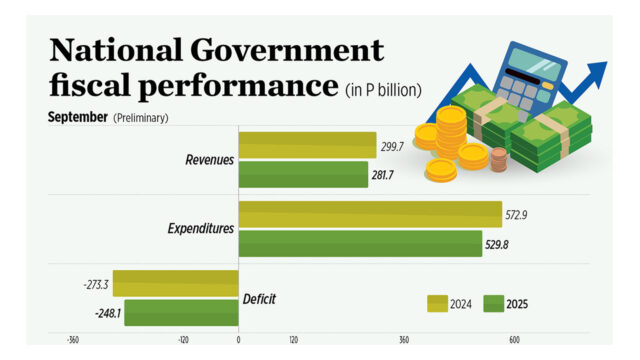Creative destruction in the Philippines

By Jam Magdaleno
THE 2025 Nobel Prize in Economics is out. Institutionalists, economic historians, and political economists have won again, this time Joel Mokyr, Philippe Aghion, and Peter Howitt. This year’s award reminds us that prosperity does not emerge merely from the dichotomy of accumulating capital or protecting industries, but from nurturing a society capable of replacing the old with the new. Their work deepens Joseph Schumpeter’s century-old insight that capitalism’s strength lies in creative destruction — the continuous process of innovation that dismantles outdated firms, technologies, and ideas to make room for better ones.
In the formalization of this insight, Aghion and Howitt show how growth emerges when new firms armed with better ideas leapfrog over incumbents; Mokyr complements this by explaining how such innovative cultures take root: through societies that value curiosity, experimentation, and dissent. Together, they remind us that the wealth of nations is less about accumulation than about transformation.
So, the question becomes: What happens to countries where transformation is politically, culturally, or institutionally discouraged?
For decades, the Philippine economy has grown but not transformed. It remains dominated by non-tradable sectors such as real estate, retail, construction, utilities, and domestic services. These are areas shielded from foreign competition, benefiting from protectionist laws and local political networks rather than global competitiveness.
The Philippine Institute for Development Studies (PIDS) and other policy studies document how private investment and job growth in recent years have been concentrated in non-tradable activities such construction, retail, utilities, and domestic services, crowding out tradable, export-oriented industries. The World Bank’s “Growth and Jobs Report” notes that roughly three out of four new jobs since 2010 were created in non-tradables. Manufacturing value-added now stands at about 15-16% of GDP (2024), well below its early-2000s peak of roughly 25%, while exports of goods and services are about 25-30% of GDP today — figures that together point to a structural tilt away from tradables and global competition.
This structural bias toward non-tradables has consequences. Because these industries do not face global competition, they have little incentive to innovate. They thrive on regulatory capture, real estate appreciation, and rent-seeking arrangements, rather than on productivity gains or technological advancement. In short, the Philippine business sector has mastered creative preservation, not creative destruction.
Add to this the fact that doing business in the Philippines is a nightmare. A March 2024 Pulse Asia survey found that 56% of Filipinos identify complicated rules and red tape as a top barrier to foreign investment, and 55% cited restrictive foreign-ownership rules. UNCTAD reports that the Philippines attracted $8.94 billion in net FDI in 2024, representing only about 4% of ASEAN’s roughly $225 billion of FDI inflows that year, underscoring the country’s weak relative performance on attracting foreign capital.
Foreign capital is not just money, it carries with it new technologies, business models, and competitive pressures that force local firms to evolve. Economists such as Chang-Tai Hsieh of the University of Chicago and Peter Klenow of Stanford University have shown that openness to trade and investment accelerates creative destruction by enabling new firms to enter and replace less efficient ones. In our context, however, our laws and bureaucracy have not only deterred investors but also driven the very idea of innovation out of our collective consciousness.
Contrast this with economies that embraced competition and innovation, such as South Korea. By the mid-2010s Korea was investing about 4.3% of GDP in R&D — among the highest rates in the world. The country effectively moved from imitation (for example, earlier generation consumer electronics) toward creating globally competitive technologies such as semiconductors and mobile devices. For instance, Korean firms became world-leaders in digital-display technologies, overtaking many of the old-guard Japanese makers. Their cultural shift is clear: innovation was elevated to a national mission, not just a corporate endeavor.
Korea’s policy push, institutional reforms, and cultural shift enabled that. The Philippines, by contrast, still shows many signs of the “protected incumbent” state.
If we are serious about generating transformational growth, the following policy directions drawn from liberal reform traditions align well with the economics of creative destruction:
1. Liberalize entry and competition. The recently amended Public Service Act and Retail Trade Liberalization Act should be enforced aggressively. Foreign participation must extend to high-value sectors such as education, energy, and digital infrastructure. The constitutional restrictions on foreign ownership, among the most prohibitive in ASEAN, continue to block inflows of capital and knowledge. Although retail trades have seen meaningful liberalization under RA 11595, minimum-paid capital requirements and sector-specific constraints persist. Simplifying business registration and licensing would also lower entry barriers. A truly competitive economy cannot be built when it takes months to start a business and years to close a failing one.
2. Build institutions for innovation. The government should move from control to enablement. Expand incentives for research and development, promote innovation sandboxes, and link universities with industry through applied research hubs. Korea and Taiwan did this decades ago. Encourage “permissionless innovation” — the presumption that new products or services are allowed unless proven harmful, not the reverse. Our regulatory mindset must shift from fear to facilitation.
3. Mobilize creative and venture capital. Philippine startups remain capital-starved. While venture capital (VC) deals set a new record in 2023 (raising nearly $1 billion), this still represents only around 0.2% of GDP, far below the levels seen in more mature startup ecosystems in the region. For example, Singapore accounted for 63.7% of all equity deals in the ASEAN-6 in 2023 and captured roughly 70-73% of VC funding value in the bloc that year, illustrating how concentrated regional venture capital remains. Indonesia and Vietnam also field substantially larger ecosystems by deal-value: Indonesia accounted for roughly 24% of Southeast Asia’s VC investment across 2021–23, while Vietnam has been steadily raising hundreds of millions annually.
Our creative industries, design, digital media, and gaming, represent untapped export potential. Strengthening intellectual property protection, streamlining taxation, and enabling diaspora-linked investment funds could unleash creative capital as a new growth engine.
4. Protect competition and sunset privileges. Creative destruction cannot occur if incumbents are untouchable. Strengthen the Philippine Competition Commission’s (PCC) capacity to prevent anti-competitive mergers and dismantle exclusive franchises. Sunset clauses for regulatory privileges can restore fairness and dynamism.
Mokyr reminds us that innovation begins when societies believe that improvement is possible. That requires a paradigm shift — from equating stability with success to celebrating change as progress. The Philippine economy’s comfort with non-tradable sectors mirrors its cultural preference for protectionism. But there is no path to prosperity that does not pass through disruption. To innovate is to take the risk of failure.
Liberalization, openness, and competition are not cold market doctrines but are instead moral commitments to progress and evolution. And evolution, as Mokyr, Aghion, and Howitt remind us, begins when a society finds the courage to let new ideas destroy the old ones.
Jam Magdaleno is a political and economic researcher, writer, and communication strategist. He is the head of Information and Communications of the Foundation for Economic Freedom (FEF), a Philippine-based think tank.



















